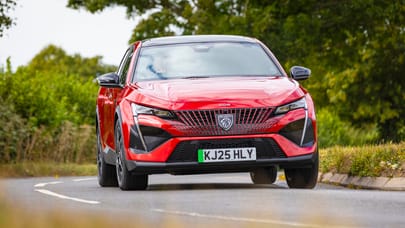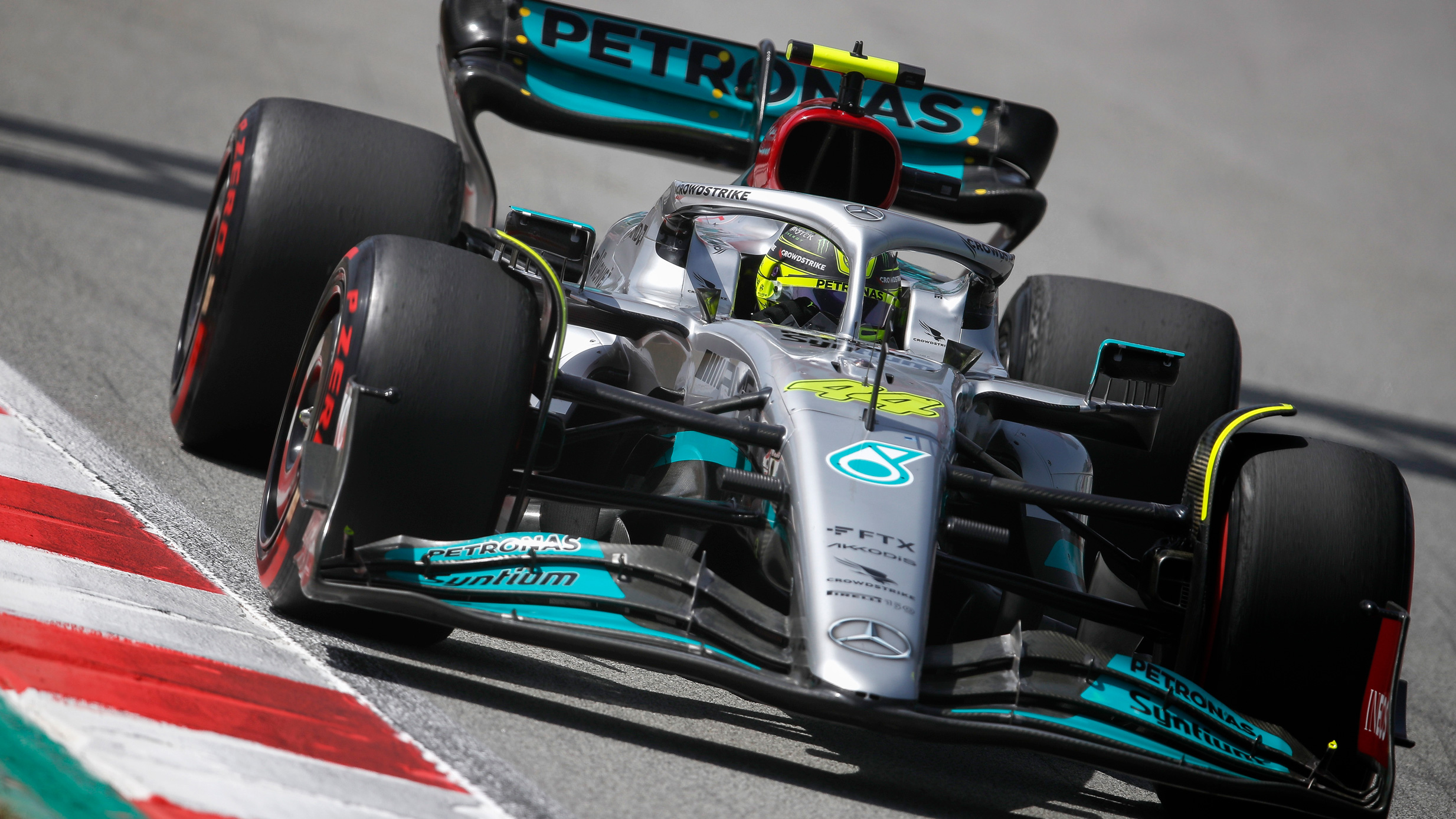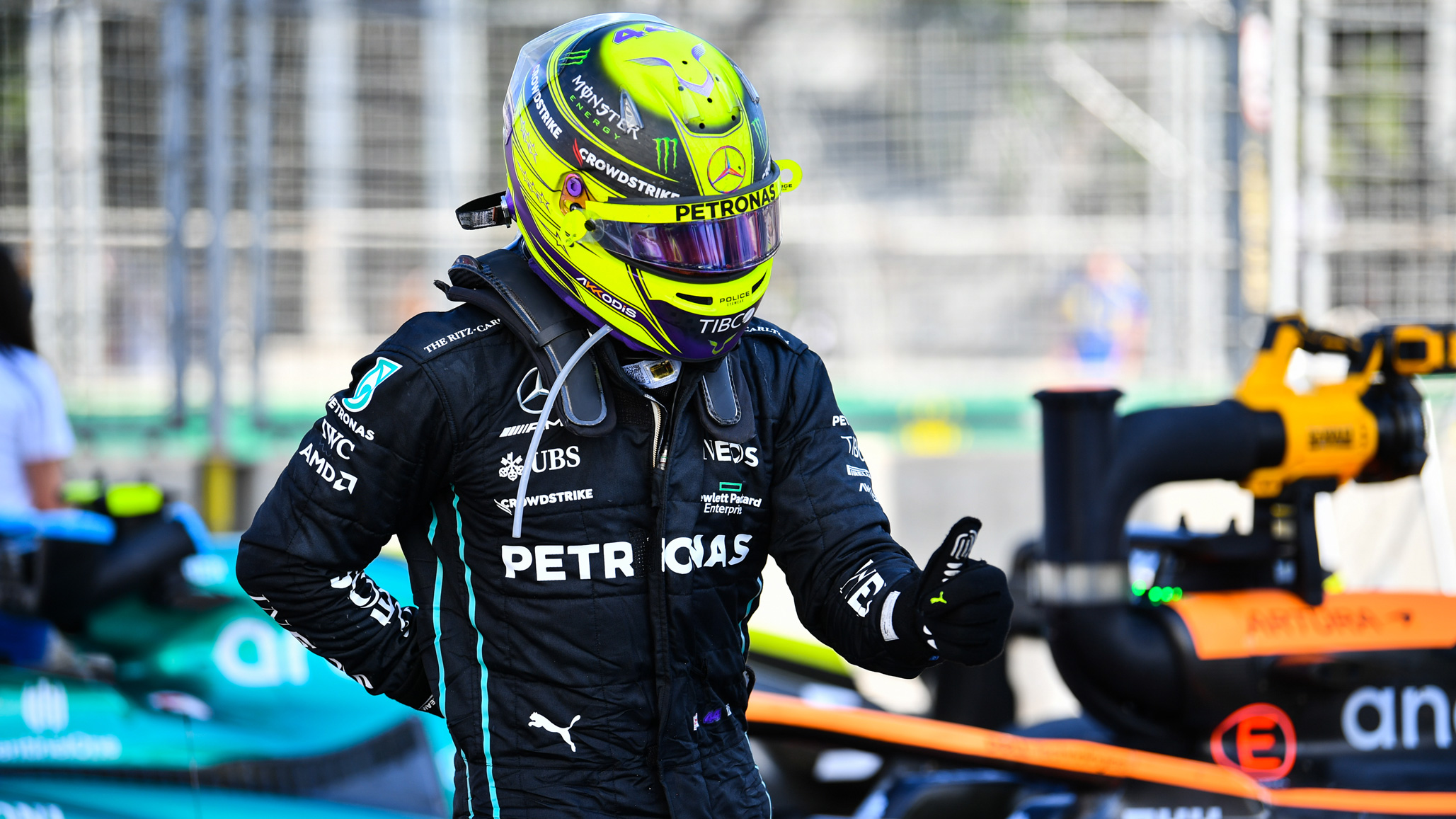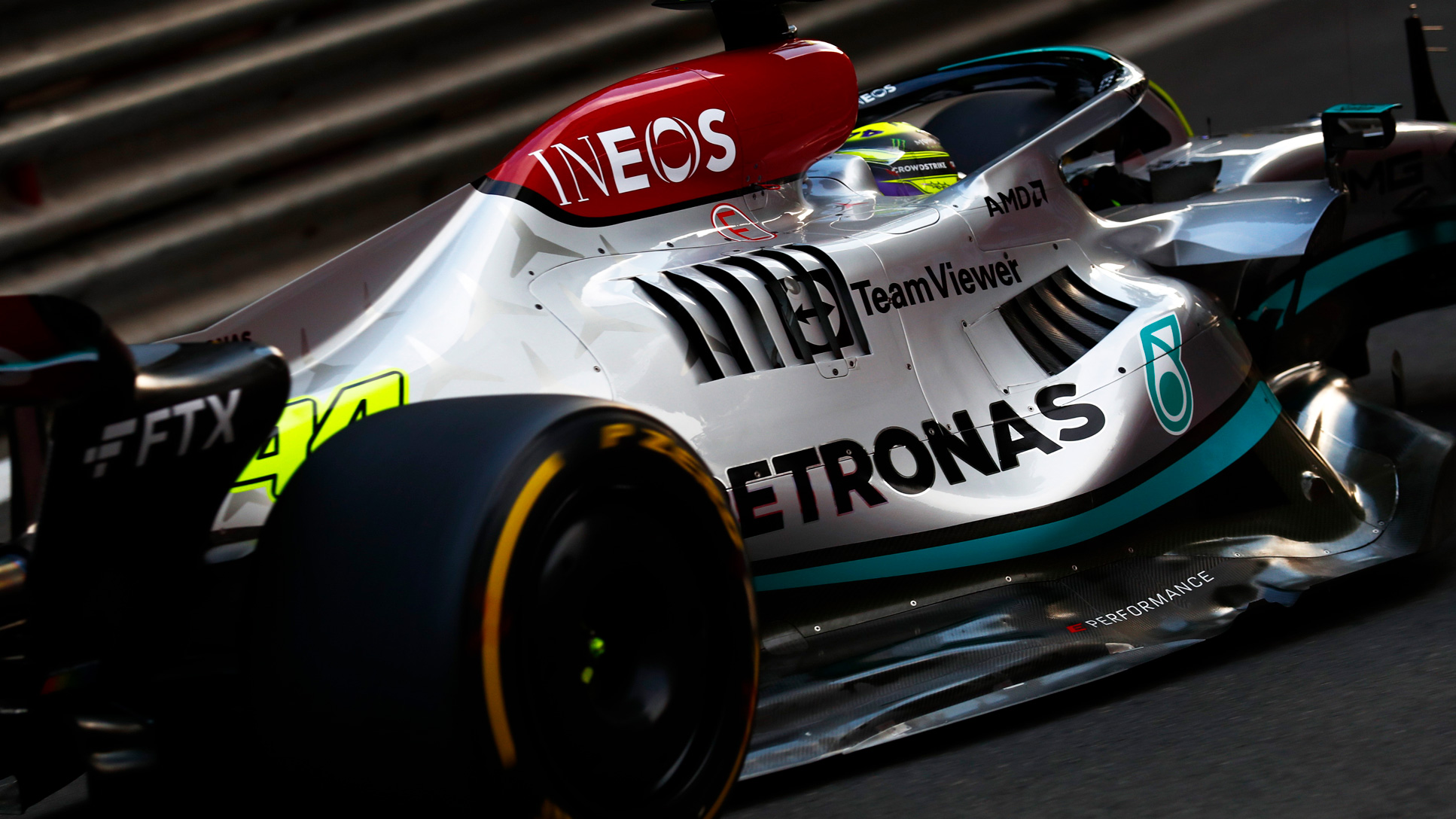
What is porpoising? F1’s aerodynamic phenomenon explained
The rules F1 introduced in 2022 saw several cars suffer from ‘porpoising’. But, um, what is porpoising? TG has your back
In 2022, F1 introduced new rules designed to make racing closer and more exciting. Hooray! It was a massive shift from the regulations of old, and meant the teams basically had to start from scratch with their designs.
It’s why Mercedes went from eight-times-in-a-row constructors' champions to scoring a single, miserable win in the whole of 2022, and why commentators around the globe repeatedly talked about ‘porpoising’.
Which left many viewers asking ‘Er, what’s porpoising, exactly?’ It’s a fair question: even experienced fans have a hard time navigating all the jargon used by F1 folk and porpoising is just the latest catchphrase on the list. Right behind the likes of pit window, red flagged, DRS zone, and everything else in between.
So in order to clear up porpoising once and for all, TG has compiled this handy guide. Please kindly continue scrolling…
What is porpoising?
Right, in the simplest terms, porpoising is an aerodynamic phenomenon that F1 cars began to suffer from after the adoption of the so-called ‘ground effect’ philosophy, where air is sucked underneath a car to pull it down onto the track at high speed, rather than over the top of the car to push it down. With us so far?
The trouble is, the faster you go, the further a car wants to be sucked to the floor. And if it gets too close it can cause the airflow to stop - or ‘stall’ - meaning the downforce created suddenly drops off a cliff. At that point, the cars spring upwards.
Once the car’s floor is clear of the ground however, the flow of air kicks in again and the car is sucked downwards once more. This aggressive bouncing is porpoising.
Why is it called porpoising?
Funny word, isn’t it? Porpoising comes from the humble porpoise, a sea-dwelling mammal that’s known to bob up and down on the surface of the ocean as it swims along. Very similar to the dolphin, but ‘dolphining’ doesn’t have the same ring to it, does it?
What causes porpoising?
To expand a little, F1’s latest rulebook was born out of a desire to see cars able to follow each other more closely. You see, under the old rules, getting close enough to a rival to launch a Fernando Alonso-style overtake was very difficult at most circuits, because the manner in which the cars created downforce left a wake of turbulent air. If you got stuck in this ‘dirty’ air, you’d lose downforce, making overtaking more difficult.
It’s the main reason why F1 cars have the DRS (Drag Reduction System); a flap in the rear wing that gives higher top speed, which drivers can open when they’re within a second of the car ahead.
Top Gear
Newsletter
Thank you for subscribing to our newsletter. Look out for your regular round-up of news, reviews and offers in your inbox.
Get all the latest news, reviews and exclusives, direct to your inbox.
Anyway, back to porpoising. F1’s new cars are designed to significantly reduce the turbulent air they create (notice the winglets on the tyres, and how the front wings are far less complicated than before?), meaning cars lose far less performance when running nose to gearbox.
To compensate, they now generate that all-important downforce through ground effect, with a pair of ‘venturi’ tunnels running underneath the cars. By forcing air through these at speed, you can create a significant suction force that gives us the incredible speed we all want to see from F1’s finest, without the shortcomings of before.
Porpoising is what happens when you can’t control what the downforce does to the airflow under your car.
How can you stop porpoising?
Oh that’s easy, just raise the ride height of your car. ‘So why don’t teams just do that?!’ we hear you ask. Well, they have. For 2023 the FIA revised the rulebook by raising the minimum height of every car's floor edge by 15mm, after the drivers complained that the extreme bouncing was unsafe.
But it all comes back to that key phrase again: downforce. By running a car (and the edges of its floor) higher off the ground you can prevent porpoising, but it also means you’ll create less downforce.
With less downforce, your car will be slower. And if your car is slower, you won’t score any points. And if you don’t score any points, Guenther Steiner will laugh at you on the next season of Drive to Survive. Which is why the FIA had to step in, because no team was going to volunteer to make its car worse and simply hope everyone else would do the same.
It didn't help matters that clever hydraulic suspension systems have been banned, partly because they’re expensive (and teams operate under a cost cap now) but also because they were found to contribute to that dirty air we were talking about. So that’s not a solution teams could pursue.
So porpoising is dangerous?
Potentially yes. Early in 2022 Mercedes suffered from porpoising worse than any other team on the grid, and after the Azerbaijan Grand Prix Lewis Hamilton said there were times he very nearly lost control of his car in the high speed corners.
The problem was that Mercedes' car was designed to run as low to the ground as possible, and the team didn't realise the myriad of problems that would create until it was too late. Having tried (and apparently failed) to make its concept work before the start of the 2023 season, the result of the Bahrain Grand Prix - in which the team was beaten by Aston Martin, an outfit which buys many of its parts from Mercedes but has adopted the superfast design concept of Red Bull - team principal Toto Wolff has finally admitted they need to go back to the drawing board. Oops.
Anyway, many, if not most of the drivers urged the FIA to intervene, with some believing that it was only a matter of time before they sustained significant injuries, either from having a massive crash or through the repeated (and in some cases quite violent) bouncing.
From the 2022 French Grand Prix onwards, the FIA imposed an acceptable limit for bouncing monitored by an accelerometer in each car. From that point forwards, any team in breach of the limit would then be forced to raise their ride height to fix the problem, or potentially face exclusion on safety grounds.
The FIA chose that approach because not all of the teams were suffering that badly from porpoising, and those that foresaw the problems and built machines accordingly argued it was up to their rivals to design better cars. And they had a point.
Why were some teams affected worse with porpoising?
Good question. And if we had the brainpower to give you a detailed answer, we’d likely be lecturing at Harvard and not scribbling for TopGear.com.
However, it all comes down to the different philosophies the teams have adopted with their cars, and how well those designs translate into the real world.
Take Mercedes and its narrow sidepod strategy: according to the team this should create huge amounts of downforce, but its powerful computer simulations didn’t predict the bouncing that became obvious in the first lap of testing.
There was some speculation that the lack of sidepods compared to the other teams meant the floor - which is so important for generating downforce - was too exposed and therefore flexing at high speed.
And that’s the key: generating a stable, manageable downwards force that goes up to (but not beyond) the limit of what’s possible under the new regs. It should come as no surprise that the F1 superbrain that is Adrian Newey has designed yet another dominant car.
How did the teams fix porpoising?
Skip forward to the present day and the problem of porpoising in F1 has largely gone away. Even the Mercedes - which resembled something of a carbon fibre spacehopper in 2022 - looks far more stable on track, even if the car is still much slower than the leading Red Bull RB19.
There are a few reasons why porpoising has mostly been cured. The FIA raising the minimum floor edge ride height by 15mm is one, and while this has helped fix porpoising, the late rulebook change screwed some teams' design plans: McLaren reckons it's a large factor in its 2023 car being so slow in the opening race of the season.
The other big reason is that teams have had 12 months to get on top of the problem, and the start of the new season means they've arrived with cars that have solutions for porpoising built in. Remember, with cost cap spending limits now in force, teams can no longer splash oodles of cash to make their cars better. And for many in 2022, that meant sticking to a flawed design for a whole year. Painful.
And what have the teams learned specifically? Well, many have now grasped the subtleties of creating downforce via ground effect. Think of it like spreading butter on toast: for breakfast you want an even spread that covers the whole of the slice, but in F1 you want coverage that peaks in the right places and yet bleeds off gradually. Yum yum, tasty downforce.
What does porpoising feel like?
Like attempting parkour in a tumble drier? Or riding a pneumatic pogo stick?
Obviously we haven’t driven an F1 car ourselves, so here’s Lewis Hamilton speaking immediately after the Baku GP in 2022: “I just got through that race on adrenaline, biting down on my teeth through the pain. I can’t express the pain that you experience, especially on the straight here.”
And here’s his teammate George Russell: “We were smashing the ground every single corner and every lap for 90 minutes. It was pretty brutal.”
Not pleasant, in other words.
Trending this week
- Car Review
Hyundai Kona
- Long Term Review
Time's up with the Mini Countryman: here's the six-month verdict
- Top Gear's Top 9
Nine dreadful bits of 'homeware' made by carmakers










